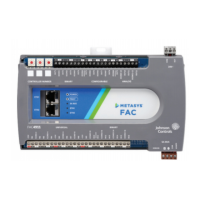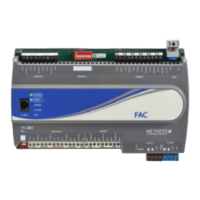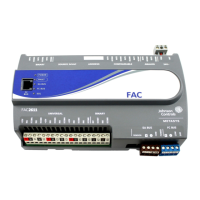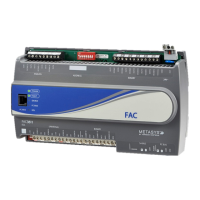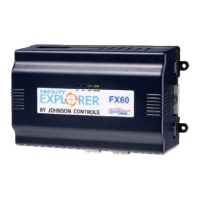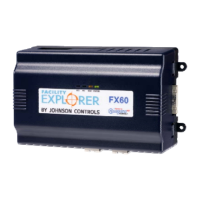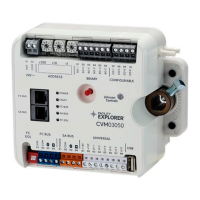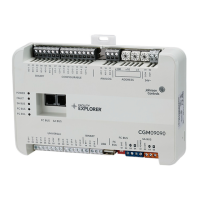Mounting Features and Dimensions
See Figure 3 for mounting dimensions in millimeters and
inches. Inches are listed in parenthesis. Figure 3 also
illustrates the DIN rail channel and the mounting clips in
an extended position.
Figure 3: Back of Controller
DIN Rail mount applications
About this task:
Mounting the controller horizontally on 35 mm DIN rail is
the preferred mounting method.
To mount a field controller on 35 mm DIN rail, complete
the following steps:
1. Securely mount a 23 cm (9.125 in.) or longer section
of 35 mm DIN rail, horizontally and centered in the
selected space, so that the controller mounts in the
position shown in Figure 2.
2. Pull the two bottom mounting clips outward from
the controller to the extended position.
3. Hang the controller on the DIN rail by the hooks
at the top of the (DIN rail) channel on the back of
the controller, and position the controller snugly
against the DIN rail.
4. Push the bottom mounting clips inward (up) to
secure the controller on the DIN rail.
To remove the controller from the DIN rail, pull the
bottom mounting clips out to the extended posi-
tion and carefully lift the controller off the DIN rail.
Wall mount applications
About this task:
To mount a controller directly on a wall or other flat
vertical surface, complete the following steps:
1. Pull the two bottom mounting clips outward and
ensure they are locked in the extended position.
2. Mark the mounting hole locations on the wall in
either the horizontal or vertical mounting position.
Or hold the controller up to the wall or surface in a
proper mount position and mark the hole locations
through the mounting clips.
3. Drill holes in the wall or surface at the marked
locations and insert appropriate wall anchors in the
holes (if necessary).
4. Hold the controller in place and insert the screws
through the mounting clips and into the holes (or
anchors). Carefully tighten all of the screws.
Important: Do not overtighten the mounting
screws. Overtightening the screws may
damage the mounting clips.
Wiring
CAUTION
Risk of Electric Shock:
Disconnect the power supply before making electrical
connections to avoid electric shock
ATTENTION
Mise En Garde: Risque de décharge électrique
Débrancher l'alimentation avant de réaliser tout
raccordement électrique afin d'éviter tout risque de
décharge électrique.
CAUTION
Risk of Property Damage:
Do not apply power to the system before checking
all wiring connections. Short circuited or improperly
connected wires may result in permanent damage to
the equipment.
ATTENTION
Mise En Garde: Risque de dégâts matériels
Ne pas mettre le système sous tension avant
d'avoir vérifié tous les raccords de câblage. Des
fils formant un court-circuit ou connectés de façon
incorrecte risquent d'endommager irrémédiablement
l'équipement.
FAC4911 Advanced Application Field Equipment Controller Installation Guide4
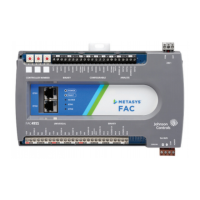
